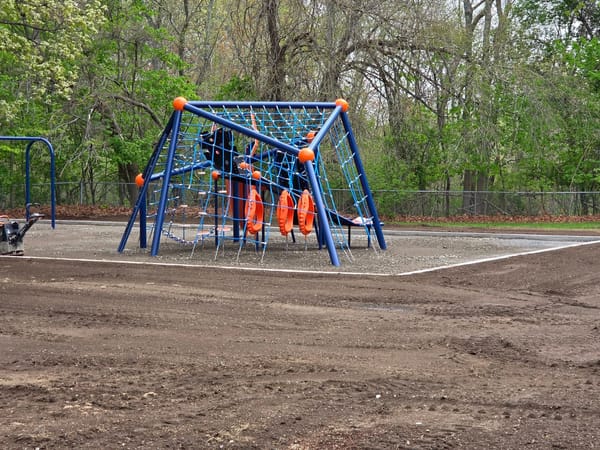Bill & Jane's Home for Wayward Animals
In this installment of Plants & Animals, Bill and Jane put the tenet of "All life is precious" into practice.


Our house has long been known as the place to bring wounded or lost creatures. All the neighbors knew that, if they found an animal in need, they could bring it to “Bill & Jane’s Home for Wayward Animals” and we would do our best to help it. Over the years we have hosted a large number and variety of elsewhere unwanted “guests”: birds, baby squirrels, a ball python, 5 different dogs, several turtles, tropical fish, goldfish, a rabbit, mice, rats, a baby raccoon, a friend, a niece, two mothers, and an uncle. Individuals stayed with us for various durations from a few weeks to 30 years. The local Lynn cable news even did a one-hour program on us and our menagerie called “Zoo Kids on the Block”. Of the many “orphans” we cared for through the years, Monty and the Sparrows stand out as some of the most remarkable.
The Sparrows
One day the doorbell rang and two kids were on the other side. We recognized them from the neighborhood but they weren’t familiar enough to be paying us a visit. There could be only one reason for this call.

“Can you take these?” one said. In their hands were two tiny, tiny baby sparrows – newly hatched, naked, eyes still shut. They had just come out of eggs barely bigger than a jelly bean. We said yes but cautioned the kids that the birds were very unlikely to survive. Once the hatchlings, active and looking to eat, were nestled in a tissue nest inside a little cardboard box, we referred to our in-home guide, “Care of the Wild Feathered and Furred” (Mae Hickman and Maxine Guy 1973) and started feeding them warm milk and honey using a plastic eyedropper. We gave water the same way.
At this stage, they needed to be fed every 15 minutes during daylight hours.
We next mixed baby cereal and hard-boiled egg yolks with a little milk, stuffing a small blob into their open mouths with a toothpick as they squeaked and begged for food. Another good food was raw hamburger – again, small blobs on a toothpick. After a day or so, we tapered off feeding to about once every 30 minutes and eventually to once an hour. Thankfully, they slept through the night.
Of course, we could not leave them unattended during the day, so Jane and I alternated taking the tiny birdlets to work with us. I kept them under my lab workbench and fed them hourly. Co-workers loved them; we kept them secret from management. They did amazingly well!
After about two months, we transitioned them to seed and more natural food just by offering it on the floor.
Before they could be released, we had to teach the sparrows how to fly. Once they were fully feathered, Jane and I would gently toss them back and forth to each other, first from a few inches and then gradually longer distances. Initially they would flap wildly in a complete panic, but they eventually figured out how to use their wings.
When we assumed they were ready, we took them outside and put them on a low branch. One flew off immediately, and after quite a bit of contemplation the other flew away as well.
Monty
This little European starling was found lying on the sidewalk outside of where I worked at the FDA New England regional office in Stoneham. (It was on Montvale Avenue, hence the name ‘Monty.’) He was not newly hatched: His eyes were open, and some feathering was just emerging. The co-worker told me about him as she was leaving for home early one afternoon, almost as an afterthought.
Me: “Where is he?
She:” On my desk in a little box.”
Me, growing increasingly concerned and drawing on my experience with the sparrows: “You can’t leave him there; he needs to be fed every 30 minutes.”
She: “What should I do? I can’t take him home.”
And so, I acquired little Monty. His initial feeding schedule and substance was similar to that of the sparrows, and he commuted from home to work with me for the first month or so. Around his second week, he experienced a major seizure during a feeding. He never fully recovered, and from that moment, he was never able to perch. He could not sit on my finger or on a branch, and he could not use his wings. (I often wondered if his mother sensed he had issues and heaved him from the nest.)
He could walk awkwardly and would stay on the floor of his cage, and he learned to eat and drink from bowls on the floor. He slept in a little nest box we made for him in the corner of his cage. He vocalized normally and chirped excitedly whenever I came into the room.
Starlings eat a mixed diet that includes fruits. All fruit eaters are messy birds. Let’s just say, if soft stuff goes in, soft stuff comes out. Maintaining cage hygiene was a constant challenge, especially with Monty living on the floor of the cage.
European starlings are not native; they were brought to this country as pets in the 1890s. (Of course, they escaped and now flocks of millions exist all over the country.) They can be taught to talk and were referred to as “the poor man’s mynah bird.” Monty learned to say one thing, and that was “pretty bird”.
I always felt bad for Monty. I’d put his cage in the window so he could see the birds outside. I would take him outside and place him on the grass. I’d go around the yard and catch a few little bugs, taking them back and placing them near Monty. He would joyfully stagger around and catch them. That way he at least got to be a “real bird” for a few minutes.
Monty lived with us for four years. One day I saw he was lying in his nest, barely breathing. I took him out and held him, telling him “Pretty bird” over and over. After a few minutes he died in my hands.

Jane thought I was crazy spending such effort to keep that little bird alive, but life is precious and little Monty had stolen his way into my heart. He still resides there, along with so many other “orphans” from Bill & Jane’s Home for Wayward Animals.
Bill Boivin is a scientist, retired from 30 years of active duty with the United States Public Health Service. He is a Burlington Town Meeting Member and Conservation Commissioner. He and his wife, Jane, grew up in Lynn and now live in Burlington with their 2 mini dachshunds, 7 chickens, and Maya, a ball python. Bill and Jane have shared a love of nature, gardening, and wildlife for over 50 years. They have fostered, healed, raised, and loved a remarkable variety of animals in their time together. Learn more about Bill.





